Photos: Amphibian 'Death Scene' and Other Fossils Up for Auction
Amphibian Aspiration
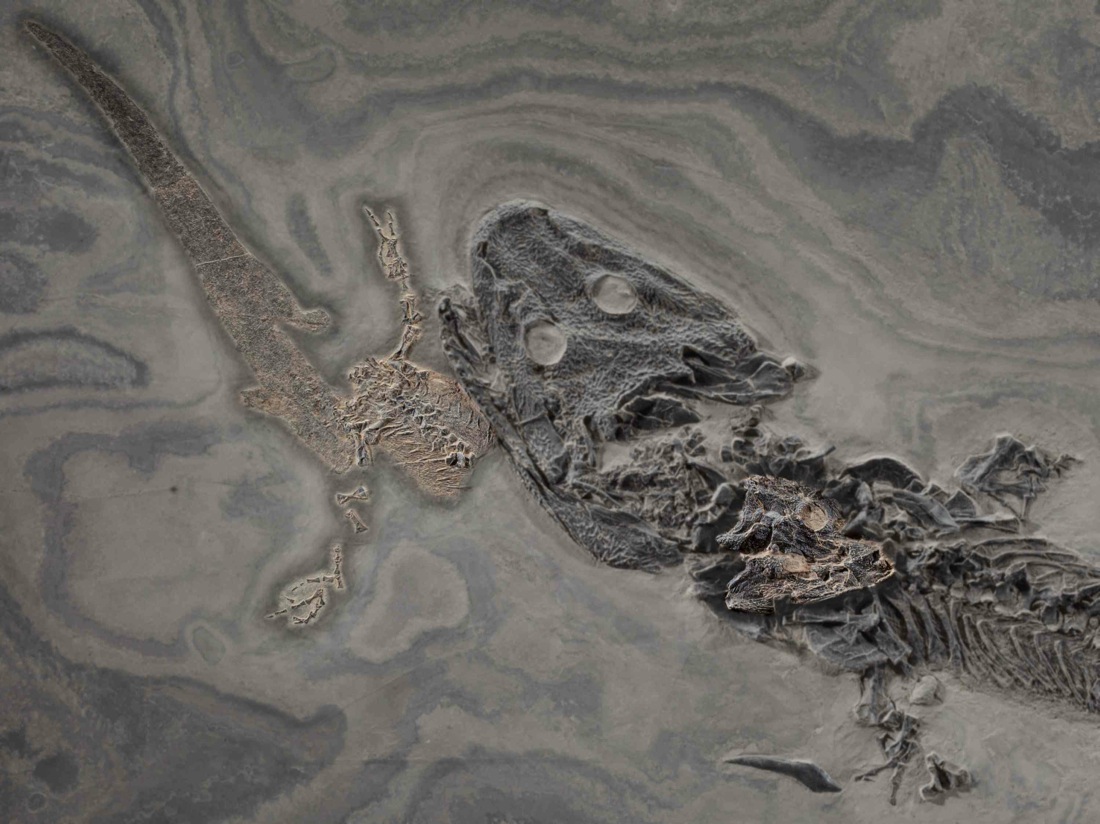
Nearly 300 million years ago, a large predatory amphibian known as Sclerocephalus haeuseri died while eating what may have been a smaller member of its own species. This "death scene" is up for auction at Heritage Auctions, along with other intriguing fossils on Oct. 19-20, 2013.
Ichthyosaur fossil
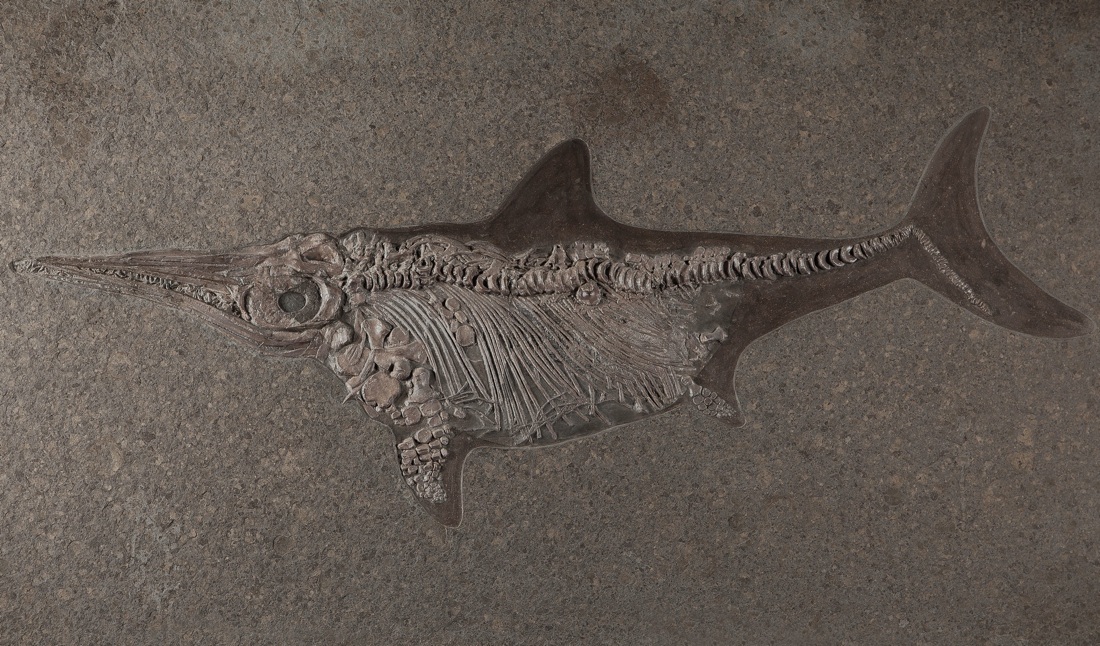
Marine reptiles known as ichthyosaurs, which lived during the time of the dinosaurs, have features that resemble those seen on dolphins, sharks and tuna, even though they are closely related. This ichthyosaur fossil measures 51 by 20 inches (about 130 by 50 centimeters) and is embedded in the dark black shale, called Posidonia oil-shale, typical of the locality where it was found.
Fish-eat-Fish
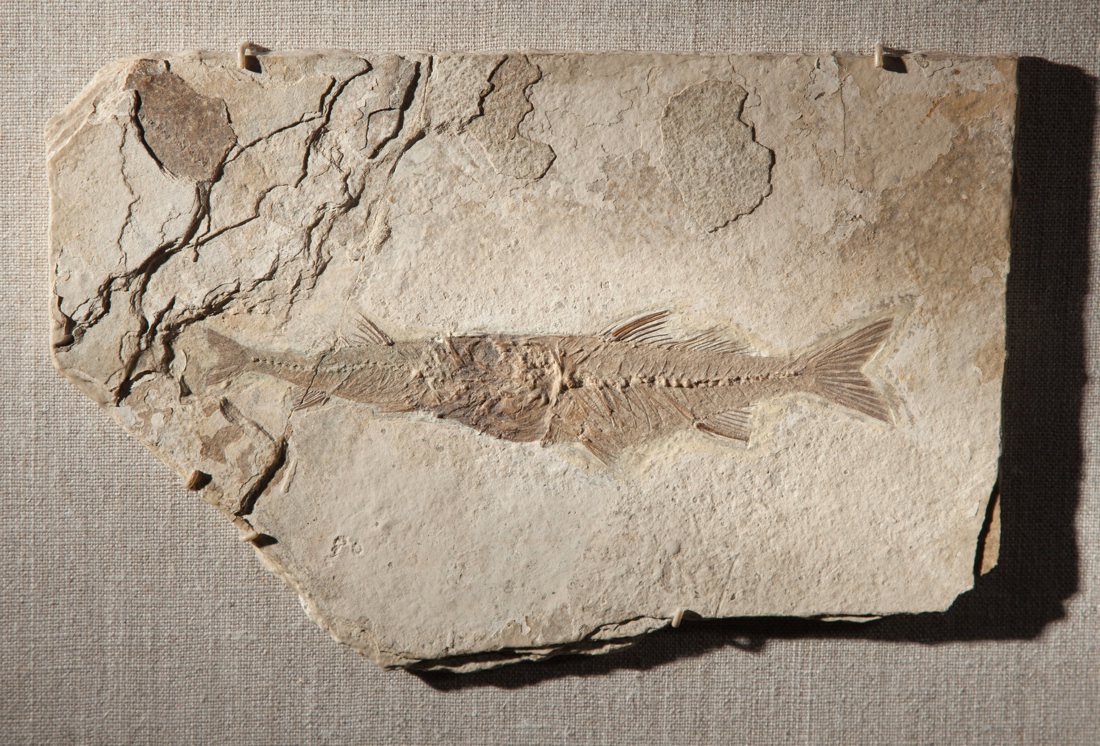
A fossil fish known as Mioplosus labracoides bit off more than it could chew when it tried to eat another member of its own kind over 50 million years ago. This pair of unlucky fish is displayed on the limestone plate where a lucky fossil digger found the "death scene."
Big fish, Small fish
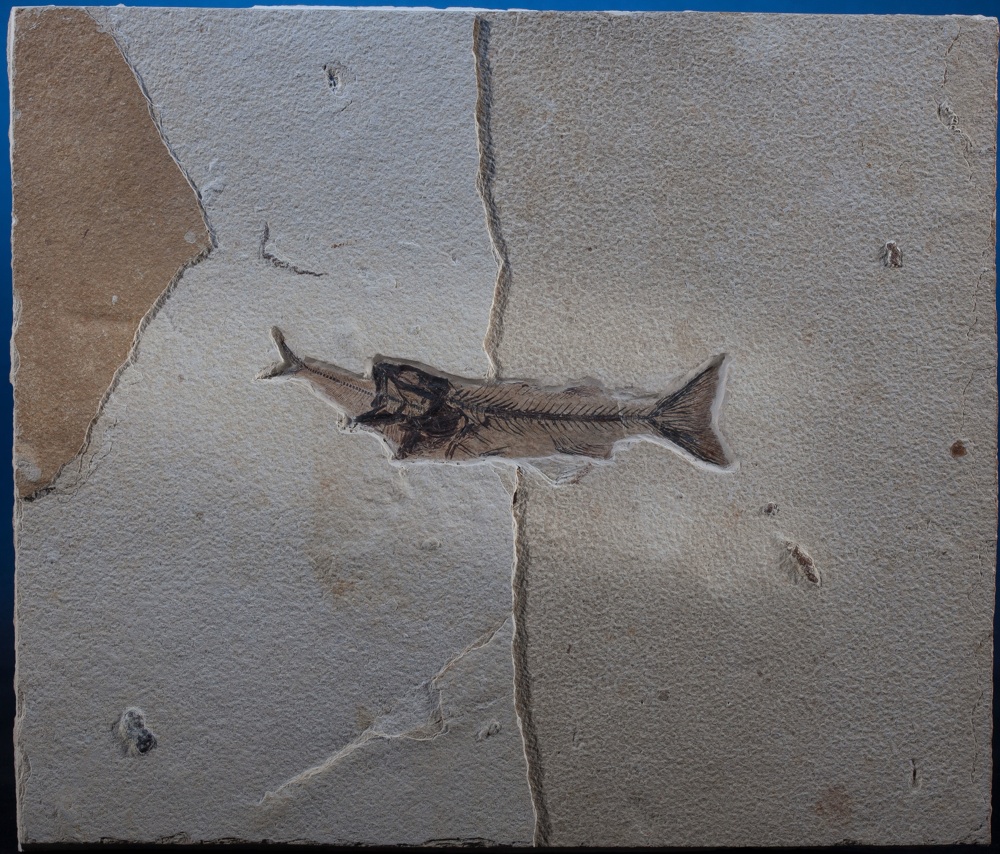
A fossil fish from the Eocene Epoch, know as Mioplosus labracoides, died while eating a smaller fish.
Ruminating hog
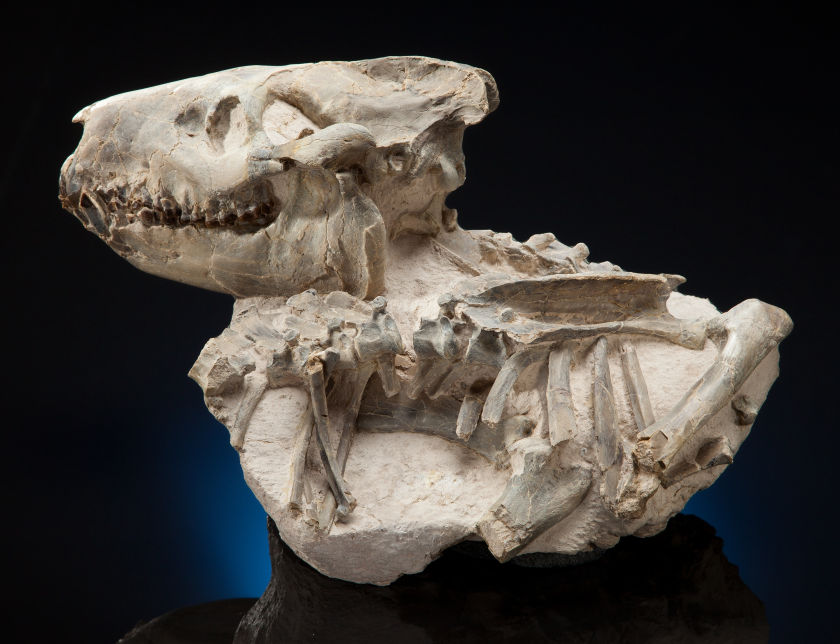
Here, a medium-sized "ruminating hog," a member of the extinct genus Oreodont, called Merycoidodon culbertsoni. "With a very well-preserved robust skull, a complete set of teeth and a limited amount of restoration, this specimen features an abundance of post cranial material in the form of numerous bones —vertebrae, ribs and limb bones — that result in a fossil diorama with a myriad of ancient history exposed," according to a Heritage Auctions, where it is being auctioned on Oct. 19-20, 2013.
Killer Fish
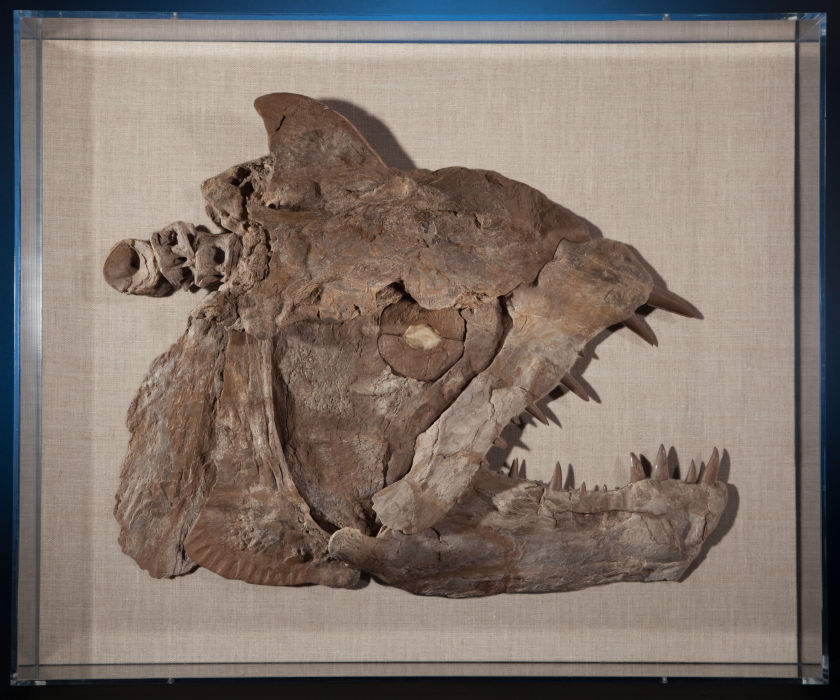
This toothy predator called Xiphactinus lived during the Upper Cretaceous Period and was very similar to the modern tarpon or tigerfish, but much bigger; the creature spanned up to 20 feet (6 meters) in length. Though Xiphactinus was fast and armed with a lethal set of teeth, once dead the organism made for great scavenging for sharks of the time, such as Cretoxyrhina and Squalicorax. "That very efficient predation and scavenging, is very likely the reason that what we have here, is but the head of this example, but what a head it is: almost 2 feet long and a foot and a half high, with a nightmare mouthful of fangs," according to a description by Heritage Auctions, where the fossil is up for auction.
Giant sloth claw
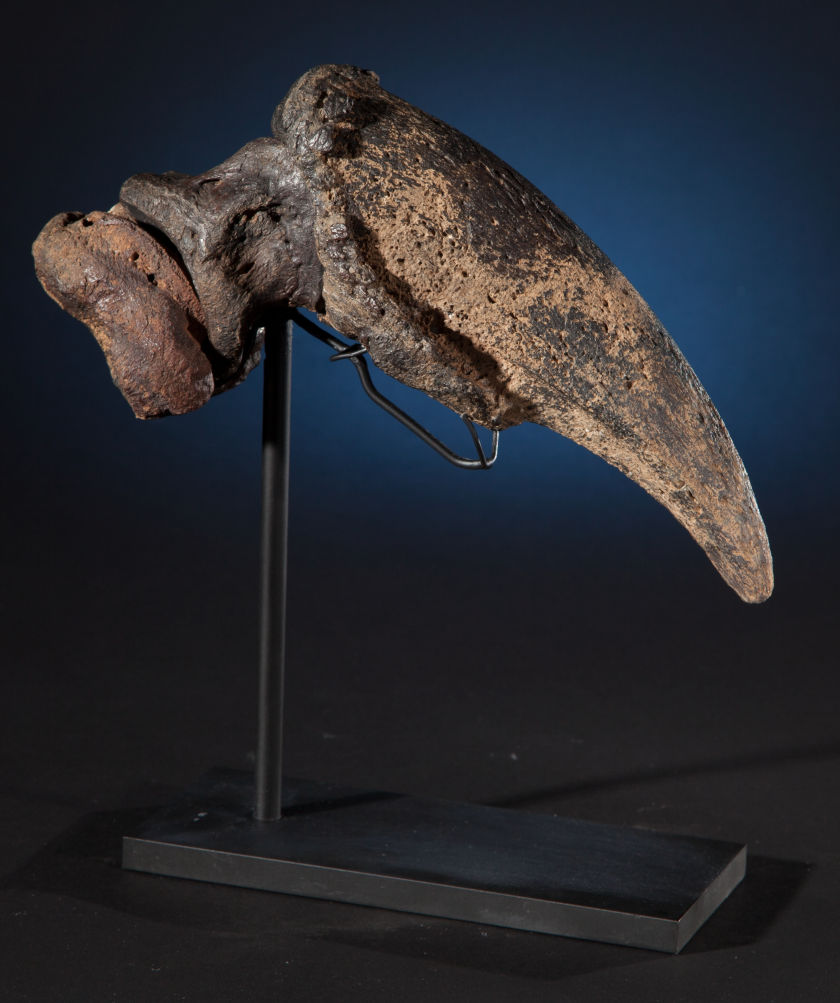
Ouch! The giant ground sloth was among the megafauna that flourished in North America and across the globe during the last ice age during the Pleisocene. The giant beasts, which also included the likes of Volkswagen-size armadillos, vanished some 12,000 years ago. Here, a giant claw from the Glossotherium, or "tongue beast," which was a genus of ground sloth and one of the largest of the megafauna.
Get the world’s most fascinating discoveries delivered straight to your inbox.
Trilobite Duo
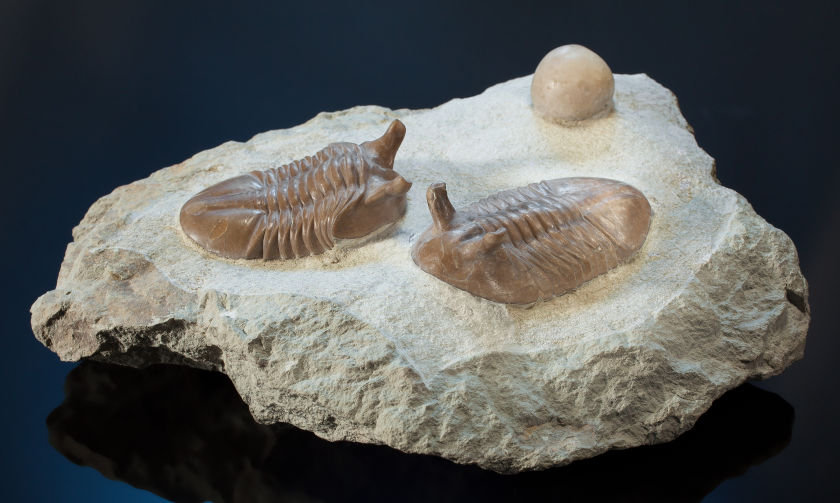
The Ordovician limestone strata around St. Petersburg, Russia, are world-famous for the amazing trilobite fauna they contain. Many of the species are extensively ornamented with tubercles, spines and "strange" looking appendages. A very important component of this trilobite fauna are the numerous species of a single genus - Asaphus. At least 25 different species of Asaphus are known and together they make up one of the best-known evolutionary sequences in the fossil record. Asaphus lived on the ocean floor just below the sediment-water interface, and evolved stalked eyes, which could be positioned just above the seafloor while the rest of the animal was buried. Through time the Asaphus evolved longer and longer eye stalks ("peduncles") -- in some, the eye stalks could be over an inch long. This specimen is a limestone plate bearing two individuals of Asaphus representing an intermediate step in the evolution of eye stalks and up for auction at Heritage Auctions on Oct. 19-20, 2013.
Rainbow Wood
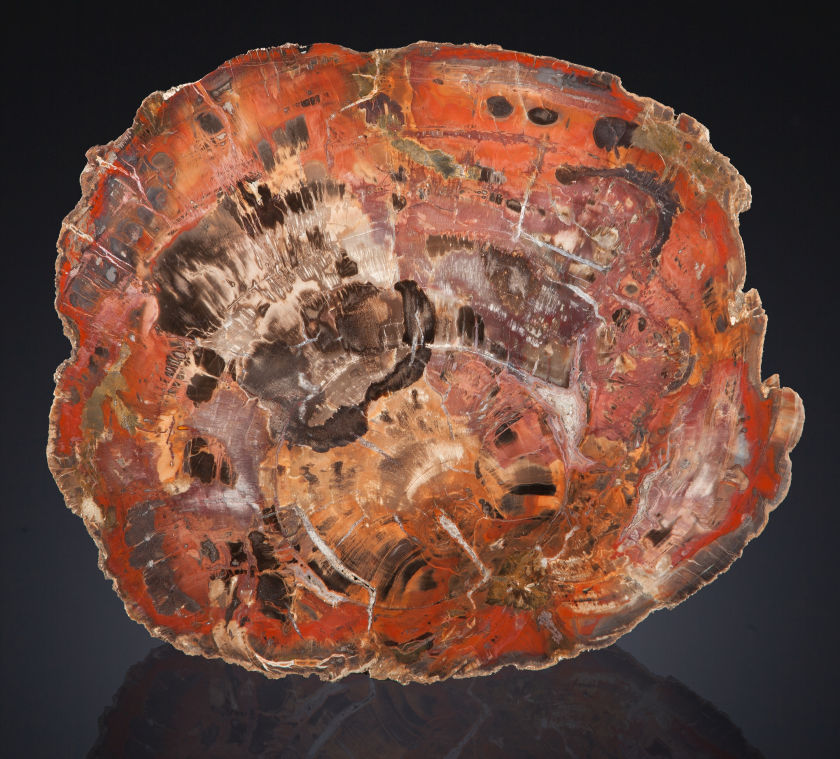
This slab of 200-million-year-old petrified wood, found in 1972 in Utah, comes from an extinct pine tree known as Auracarioxylon, which has been cut and polished to reveal the internal cell structure where the process of petrification has resulted in the organic material of the living tree being turned into a mineral replacement at a cellular level. This type of petrified wood is some of the most sought after by collectors and others due to its "rainbow" coloration; in this piece, the predominant red color is due to iron that was present when the log was mineralized. This specimen was collected from an area that was open to collecting until 1996 when it was made part of the Grand Staircase National Monument by President Clinton.
Baby pig face
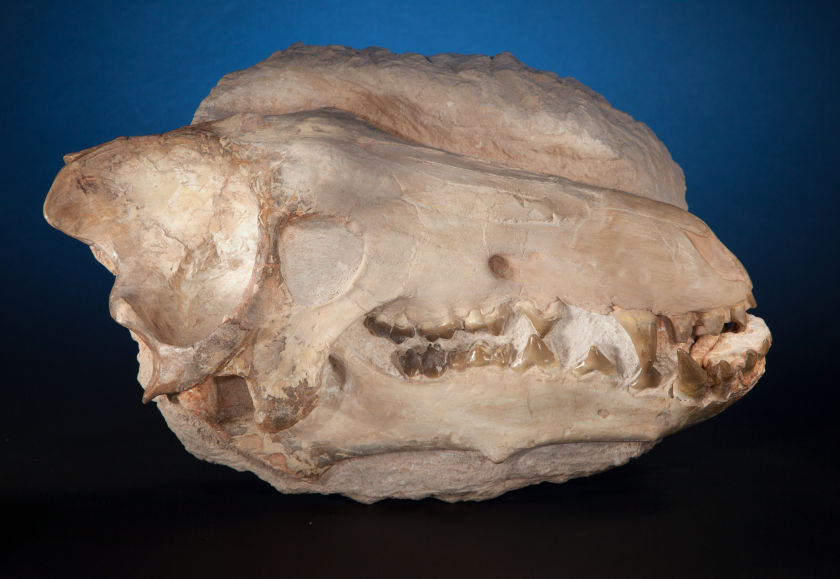
Here, a fossil skull of a juvenile Archaeotherium mortoni, an animal that belonged to the group known as Entelodonts -- peculiar distant relatives of modern-day pigs. Sometimes nicknamed "hell pigs" or even "terminator pigs," these beasts, although omnivorous, were considered the apex predators of North America during the early Miocene and Oligocene Epochs, existing for a period of about 21 million years, according to Heritage Auctions where the fossil is up for auction. This spectacular specimen was collected from the White River Badlands in South Dakota.
This "baby pig" did not have the tough and thick build of an adult and likely resembled a large, fanged peccary the size of a modern cow with bumps projecting from the side of its head, and high shoulders presumably to carry strong neck muscles in support of a heavy head.



